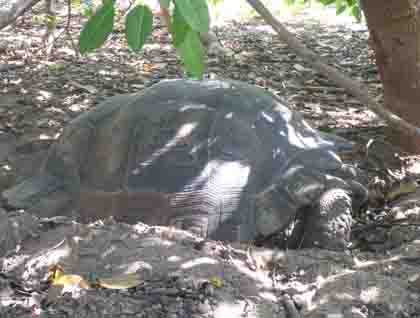Isabela is by far the largest island of the archipelago, with five active volcanoes, five different species of giant tortoises and a great diversity of flora and fauna. Early in the morning we set foot on Urbina Bay. This area was uplifted in a sudden event in 1954 and all along the trail we found traces of this event in the form of barnacles and marine shells still attached to rocks, as well as an abundance of coral. Nowadays Urbina is green and full of vegetation and many species have settled here due to this abundance of food, like the land iguanas and the Alcedo giant tortoises. We found several land iguanas and two juvenile giant tortoises roaming freely along the fresh foliage of this wet season. After walking a bit, we came back to the landing beach where our guests had time for snorkeling and swimming in the water to cool down. We observed some white tipped sharks, cormorants and colorful tropical fish. We headed back on board and afterwards the National Geographic Islander sailed north to Tagus Cove, our next destination and also part of Isabela.
Tagus Cove, an anchorage long used by pirates, buccaneers and other early visitors, is an historic place which still bears the inscriptions from visitors in the nineteenth century. The oldest graffiti found here dates back to 1836, the year after the HMS Beagle dropped anchor in this very same place. With excellent weather conditions and calm seas we started our activities- kayaking and snorkeling, enjoying the underwater world of Tagus Cove and took advantage of a last chance to snorkel with Galapagos penguins and flightless cormorants. Towards the later part of the afternoon we headed out in Zodiacs to explore the coastline, observing Galapagos sea lions, flightless cormorants, Galapagos penguins, brown pelicans and blue-footed boobies.
The day came to an end, but we were still thinking about the gigantic volcanoes that captivated us during our visit to this magical place.







